Related Research Articles
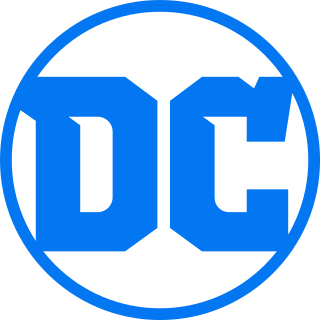
DC Comics, Inc. is an American comic book publisher and the flagship unit of DC Entertainment, a subsidiary of Warner Bros. Discovery. DC is an initialism for "Detective Comics", an American comic book series first published in 1937.

Marvel Comics is an American comic book publisher and the property of The Walt Disney Company since December 31, 2009, and a subsidiary of Disney Publishing Worldwide since March 2023. Marvel was founded in 1939 by Martin Goodman as Timely Comics, and by 1951 had generally become known as Atlas Comics. The Marvel era began in August 1961 with the launch of The Fantastic Four and other superhero titles created by Stan Lee, Jack Kirby, Steve Ditko, and many others. The Marvel brand, which had been used over the years and decades, was solidified as the company's primary brand.
The Motion Picture Associationfilm rating system is used in the United States and its territories to rate a motion picture's suitability for certain audiences based on its content. The system and the ratings applied to individual motion pictures are the responsibility of the Motion Picture Association (MPA), previously known as the Motion Picture Association of America (MPAA) from 1945 to 2019. The MPA rating system is a voluntary scheme that is not enforced by law; films can be exhibited without a rating, although most theaters refuse to exhibit non-rated or NC-17 rated films. Non-members of the MPA may also submit films for rating. Other media, such as television programs, music and video games, are rated by other entities such as the TV Parental Guidelines, the RIAA and the ESRB, respectively.
The Silver Age of Comic Books was a period of artistic advancement and widespread commercial success in mainstream American comic books, predominantly those featuring the superhero archetype. Following the Golden Age of Comic Books, the Silver Age is considered to cover the period from 1956 to 1970, and was succeeded by the Bronze Age.
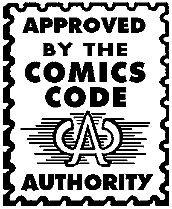
The Comics Code Authority (CCA) was formed in 1954 by the Comics Magazine Association of America as an alternative to government regulation. The CCA enabled comic publishers to self-regulate the content of comic books in the United States. The code was voluntary, as there was no law requiring its use, although some advertisers and retailers looked to it for reassurance. Some publishers, including Dell, Western, and Classics Illustrated, never used it. Its code, commonly called "the Comics Code", lasted until the early 21st century. The CC formation followed a moral panic centered around a series of Senate hearings and the publication of psychiatrist Fredric Wertham's book Seduction of the Innocent.

MAX Comics is an imprint of Marvel Comics specializing in comic book media aimed at adult-only readers. It was launched in 2001 after Marvel broke with the Comics Code Authority and established its own rating system.

An American comic book is a thin periodical originating in the United States, on average 32 pages, containing comics. While the form originated in 1933, American comic books first gained popularity after the 1938 publication of Action Comics, which included the debut of the superhero Superman. This was followed by a superhero boom that lasted until the end of World War II. After the war, while superheroes were marginalized, the comic book industry rapidly expanded and genres such as horror, crime, science fiction and romance became popular. The 1950s saw a gradual decline, due to a shift away from print media in the wake of television and the impact of the Comics Code Authority. The late 1950s and the 1960s saw a superhero revival and superheroes remained the dominant character archetype throughout the late 20th century into the 21st century.
Television content rating systems are systems for evaluating the content and reporting the suitability of television programmes for minors. Many countries have their own television rating system and countries' rating processes vary by local priorities. Programmes are rated by the organization that manages the system, the broadcaster, or the content producers.
The Marvel Comics rating system is a system for rating the content of comic books, with regard to appropriateness for different age groups. In 2001, Marvel Comics withdrew from the Comics Code Authority and established its own rating system for its publications. This was precipitated by the CCA refusing approval of the seal due to the strong depiction of violence in X-Force #116, a comic written by Peter Milligan and drawn by Mike Allred. As well, by withdrawing from the CCA, this is seen as a move by editor-in-chief Joe Quesada to lure more high-profile creators to Marvel Comics. Today's ratings are usually found on the comic's UPC box.
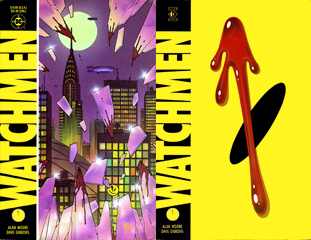
The Modern Age of Comic Books is a period in the history of American superhero comic books which began in the mid-1980s and continues through the present day. During approximately the first 15 years of this period, many comic book characters were redesigned, creators gained prominence in the industry, independent comics flourished, and larger publishing houses became more commercialized.
The Maritime Film Classification Board is a government organization responsible for reviewing films and granting film ratings in New Brunswick, Nova Scotia and Prince Edward Island.
Digital comics are comics released digitally, as opposed to in print. Digital comics commonly take the form of mobile comics. Webcomics may also fall under the "digital comics" umbrella.
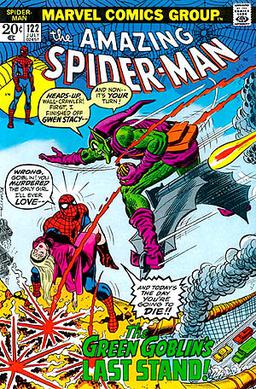
The Bronze Age of Comic Books is an informal name for a period in the history of American superhero comic books, usually said to run from 1970 to 1985. It follows the Silver Age of Comic Books and is followed by the Modern Age of Comic Books.
The TV Parental Guidelines are a television content rating system in the United States that was first proposed on December 19, 1996, by the United States Congress, the American television industry, and the Federal Communications Commission (FCC). The guidelines went into effect by January 1, 1997, on most major broadcast and cable networks in response to public concerns about increasing amounts of mature content in television programs. It was established as a voluntary-participation system, with ratings to be determined by the individual participating broadcast and cable networks.
A content rating rates the suitability of TV shows, movies, comic books, or video games to this primary targeted audience. A content rating usually places a media source into one of a number of different categories, to show which age group is suitable to view media and entertainment. The individual categories include the stated age groups within the category, along with all ages greater than the ages of that category.
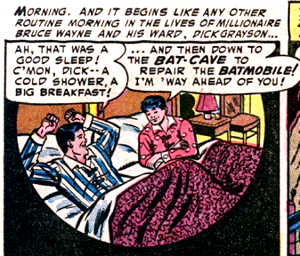
In comics, LGBT themes are a relatively new concept, as lesbian, gay, bisexual, and transgender (LGBT) themes and characters were historically omitted from the content of comic books and their comic strip predecessors due to anti-gay censorship. LGBT existence was included only via innuendo, subtext and inference. However the practice of hiding LGBT characters in the early part of the twentieth century evolved into open inclusion in the late twentieth and early twenty-first centuries, and comics explored the challenges of coming-out, societal discrimination, and personal and romantic relationships between gay characters.
The portrayal of women inAmerican comic books has often been the subject of controversy since the medium's beginning. Critics have noted the roles of women as both supporting characters and lead characters are substantially more subjected to gender stereotypes, with femininity and/or sexual characteristics having a larger presence in their overall character.
Black people have been portrayed in comics since the medium's beginning, with their portrayals often the subject of controversy. Mainstream comic publishing companies have had a historical trend of being predominantly white and male, reflecting the lack of representation and inaccurate depictions of Black people in comics. The integration of black characters in mainstream and superhero comics has endured various obstacles and challenges. Critics have noted that black men and women have historically often been portrayed as jungle or ghetto stereotypes, and as sidekicks as opposed to primary characters. Occiasionally, comic book creators would lampshade stereotypes, lack of representation and emphasize social injustices. In recent years, with the integration of more Black people in mainstream comic writing rooms as well as the creation of comics on digital platforms has changed the representation and portrayals of Black people in comics and has started to reflect the complexities of Black people across the diaspora.
Monsters Unleashed is the title of an American black-and-white comics magazine published by Magazine Management and two color comic-book miniseries from Marvel Comics. The first ran from 1973 to 1975. The two miniseries ran consecutively in 2017.
The United States pay television content advisory system is a television content rating system developed cooperatively by the American pay television industry; it first went into effect on March 1, 1994, on cable-originated premium channels owned by the system's principal developers, Home Box Office, Inc. and Showtime Networks. The voluntary-participation system—developed to address public concerns about explicit sexual content, graphic violence and strong profanity that tend to be featured in pay-cable and pay-per-view programming—provides guidance to subscribers on the suitability of a program for certain audiences based on its content.
References
- ↑ "DC Replaces Comics Code Approval with Own Rating System". Newsarama.com. Retrieved 13 March 2019.
- ↑ "Image Announces Rating System Consistent With DC Comics Ratings". Bleedingcool.com. 21 June 2011. Retrieved 13 March 2019.
